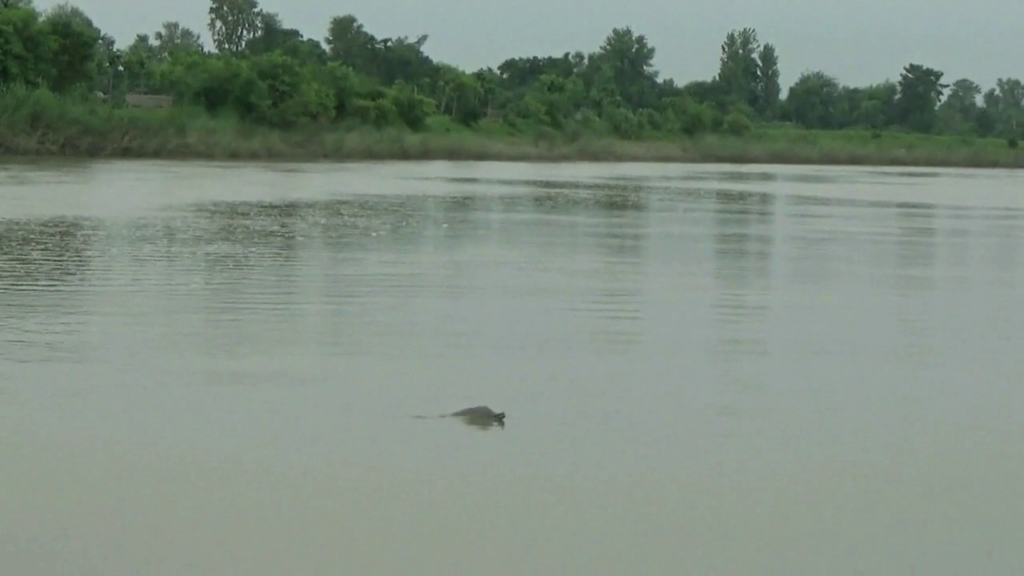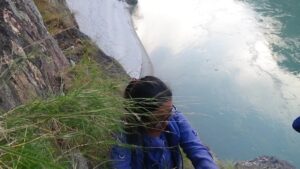In the Far-Western region of Nepal, there lies a village called Dhungana Tol. It is a tranquil little village except during the monsoon season when the Ganges River Dolphin migrate to Mohana river during which time it becomes an ecotourism hub. Tourists flock the area to catch a glimpse of the elusive Ganges River Dolphin. Other wildlife also call this area their home.

Where there is wildlife and human interaction there is bound to be conflict. This might have been the case as intensive irrigation, agriculture and other human activities dominate this area, were it not for the influential Bhojraj Shrestha dearly nicknamed “Guleli Baje” (literal translation: slingshot grandfather). He has been nicknamed so as he collects slingshot every chance he gets to prevent damage to wildlife and he makes people especially children oblige to never to hurt wildlife. He had a collection of 12,000 slingshots! This collection might have surely increased by now.

He has also setup an organization – Dolphin Conservation Center to educate and aware people on conservation. During our visit at Dhungana Tol, in an informal discussion with the local community members they said that crocodiles had eaten their cattle but because the people had been educated from the organization they did not partake in harming the creature. Retaliatory killings are major challenge for conservation but awareness had helped in combating this challenge in this area.
The community overall have helped in ensuring the survival of the endangered species. Whatever strict protocols or safety measure we develop, having local people involved in conservation is a much more sustainable option for species conservation. As exemplified by Dhungana Tol, the nexus of conservation and livelihood has really made it a safe haven for the species and helping in developing the local area. I have heard that now there are hotels nearby as well but I would really recommend staying in the community homestays to really experience the natural beauty, the wildlife and the hospitality of the people. Especially, if one is researching in the area, community homestays are the best way to get a wealth of knowledge. This also helps in generating livelihood for the local people which can be a strong motivation to conserve the species. The real guardians for conservation are the people who live near the wildlife so supporting them is the best way to conserve the species.
During my time here, I stayed at community homestay as well. It was during my internship at IUCN Nepal and there were 6 other students who stayed here for 3 days. We were staying at different houses in the area and conducted our study, ate local food, interacted with the local people and basked in the beauty of the area. Rainfall did help a lot with the hot weather but the humidity made it uncomfortable at least for the first day then we got used to it. The area used groundwater which had a really strange taste. Mixed with lemon, it tasted like soda and that’s how we preferred to drink it!
On the first day of survey, I had my boots on but it was better left home. The riparian area was swampy and the only way to travel through it was to walk really fast. I did not get the message when somebody had advised it so I got stuck and could not get out. Two people had to come and drag me out eventually! By that time, I was already stuck knee deep and the mud had started to make their way into my legs, my boots just below my knees were of no use. After that I caught on really fast and didn’t use the boot for the rest of the trip! Moral of the story listen to what locals advice!!!
I recount these experiences, when I had visited the area back in 2016. I am sure much changes have occurred and should the opportunity arise, I would be more than happy to document the changes. Till then, I rejoice on the experience of the memorable research trip.

